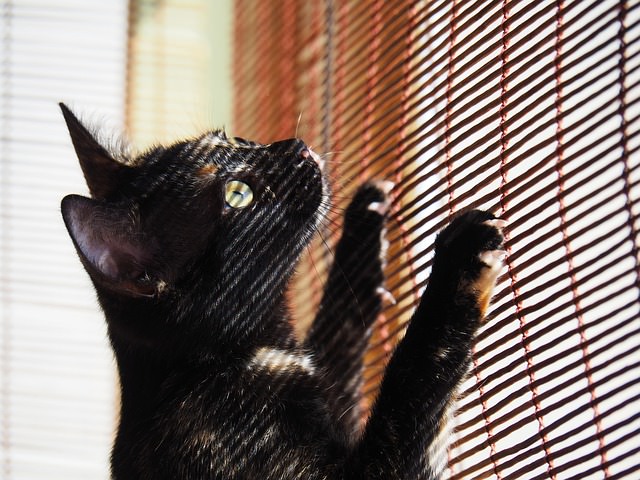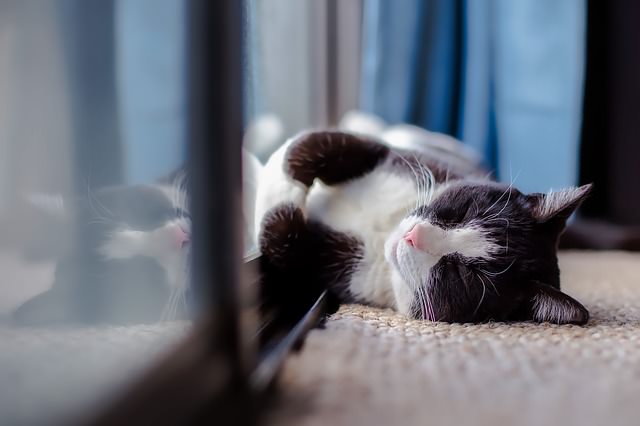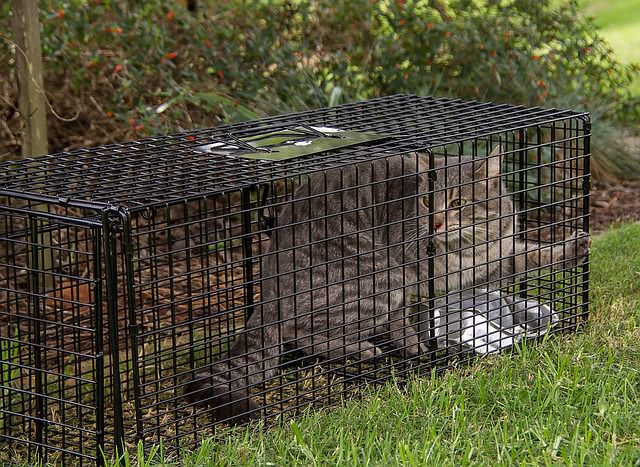Even if your cat is perfectly happy with a life inside, an open door or cracked window can be too tempting to resist. They’ll dash outside before you can stop them, but don’t let this nightmare scenario push you to the point of panic. Bringing your cat safely home is all about staying calm and thinking clearly. Finding a lost indoor cat isn’t like looking for a missing person or even searching for a dog, but there are several things you can do to bring kitty home safely. If your cat recently got out, try out these tips for a happy reunion.
# 1 – Get the Word Out
The more people who know to look out for your missing cat, the better your chances are of finding her. Walk around to your neighbor’s houses and fill them in on the situation. Ask them to keep an eye out and contact you if they see your runaway. Make sure to bring a picture with you to give them a visual.
Social media has helped countless pet owners find their fur babies simply by rapidly spreading the message. Post on your own page so your friends and family know what’s going on, but also check out local pet pages. Most neighborhoods have Facebook pages where people post about lost and found pets. Include a detailed description of where your cat went missing and a high-quality photograph with your post.
# 2 – Spread Your Scent
Cats rely on their sense of smell to help them navigate the world, and you can bring your feline friend home by making a trail of familiar scents. Place blankets, pillows, and other small household items out in the yard where kitty might catch a whiff. She’ll recognize the smell of home and hopefully follow the trail back to your door.
If your cat isn’t interested in picking up your smell, placing their litter box near the door might do the trick. Cats can be very particular about where they do their business, and indoor cats especially will want the privacy of their own litter box. She can’t hold it forever, and when she needs to go, she’ll be drawn back home by the scent of her litter box.
#3 – Visit Local Shelters
Calling local shelters and asking about your cat isn’t enough. With so many animals coming and going, shelter staff can’t always give you an accurate or up-to-date answer when you ask if someone has dropped off your missing kitty. It’s better to go in person and look at the kennels yourself.
If you go to the shelter and there’s no sign of your cat, leave your name and contact information. Check back with them every day to make sure your case doesn’t slip between the cracks. Most shelters hold lost and found animals for only a few days before they’re put up for adoption and given over to new families.
#4 – Search at the Right Times
Indoor cats who aren’t used to being outside won’t wander far from their homes. They’re likely scared of cars and loud noises, and they’ll look for a quiet place to hide out until things calm down. Finding a cat that’s purposefully hiding from you can be impossible. But they won’t stay hidden forever, and you can use your knowledge about cat behavior to find them.
Cats are nocturnal, and that means they’re more likely to be up and active after the sun goes down. Late at night and in the early morning is also when the world is at its calmest, and fearful kitties will feel more confident about exploring the great outdoors. Take a flashlight and head out into your yard at night. Shine your light in all directions and be on the lookout for a pair of shining eyes.
#5 – Set a Humane Trap
Cat traps are most often used by Trap Neuter and Release organizations, but they’re also useful when it comes to bringing a lost pet home. Animal shelters usually rent them out to pet owners for this exact reason. They’re easy to set up and completely safe. If you think your cat is in the area but eluding your search efforts, luring them into a trap with their favorite food is worth a shot.
With perseverance and a little luck, you’ll have your cat back in your arms. Once they’re safe at home, take extra precautions to make sure they don’t disappear again. Be vigilant about making sure all open windows have screens and discourage them from getting too close to open doors. Your cat should also have a collar with an ID tag and a microchip programmed with your updated contact information.





